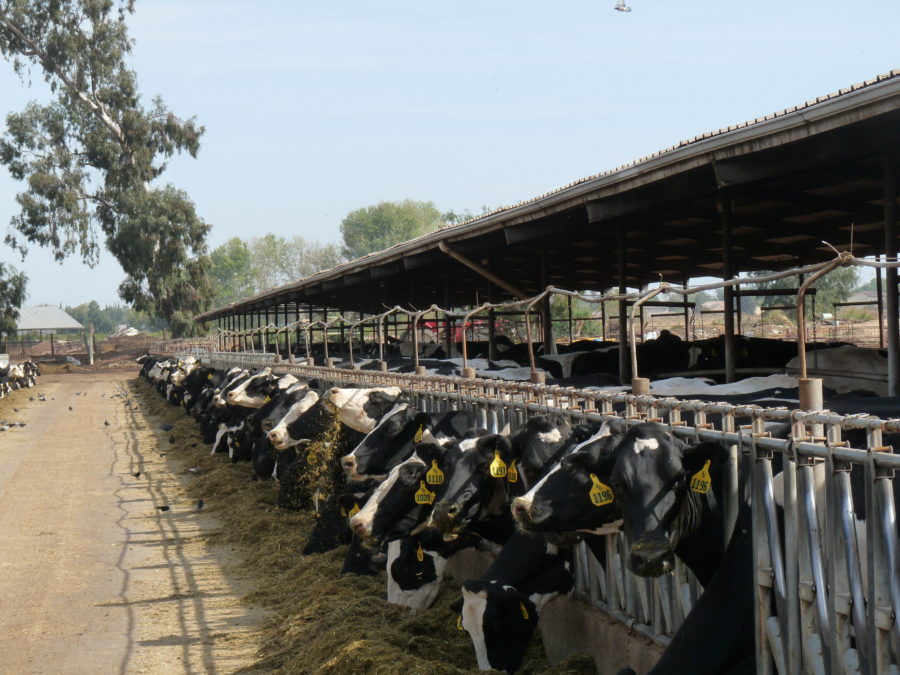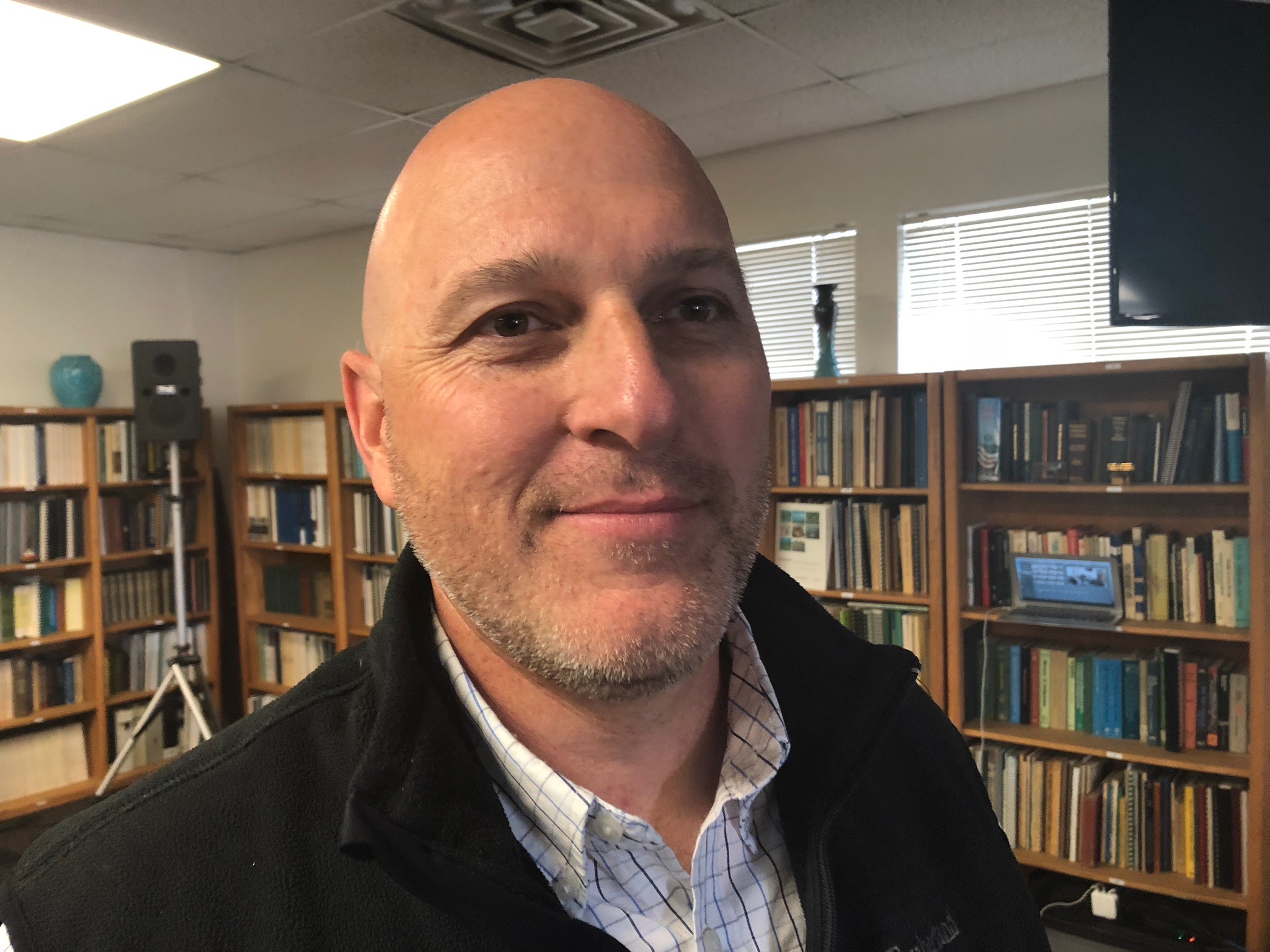Helping Dairy Operators Protect Groundwater
UCCE Advisor Helps Dairy Operators Strike a Delicate Balance to Protect Groundwater
By Jeannnette Warnert, Communications Specialist, UCANR

UC Cooperative Extension advisor Nick Clark is helping farmers in Fresno, Kings and Tulare counties.
Over the last 20 years, UC research has shown that dairies in the San Joaquin and Sacramento valleys are potentially major contributors of nitrate and salts in groundwater. To maintain the quality of this irreplaceable natural resource, the California Water Resources Control Board has ramped up regulations to ensure that diary manure and wastewater application isn’t contaminating the aquifer.
UC Cooperative Extension advisor Nick Clark is helping farmers in Fresno, Kings and Tulare counties work through the process and continue producing crops sustainably now and in the future. He was hired in 2015 as the agronomy and nutrient management advisor, a title that reflects the importance of understanding the nutrient cycle and extending information to producers. Three other UCCE advisors are also focused on nutrient management.
Clark is working with dairy farmers who are producing crops to feed their herds, as well as farmers who are producing agronomic crops – such as silage corn, forage sorghum, wheat, triticale, alfalfa, rye and oats – to sell to dairies.
“These farmers operate under the microscope of several agencies for complying with environmental regulations and ordinances,” Clark said. Clark informs growers about the fate of nutrients in plants and soil and rules in place to protect water quality, helping them stay in compliance with government regulations. “Water quality regulations are becoming more strict, more complex and more specific.”
At the same time, some of the finer details about nutrient availability are not yet well understood.
Working closely with Luhdorff and Scalmanini Consulting Engineers, a groundwater engineering and consulting firm, Clark and colleagues have set up research trials on four commercial dairies in the San Joaquin Valley and one semi-research dairy farm to replicate a variety of treatments.
“The idea is to take a much closer look at nitrogen cycling in soil and plants to develop precise data about when plant development allows the crop to take up nitrogen,” Clark said. “The nitrogen application needs to be made so it is in the form plants need when the plants can use it. Otherwise, there is an increased chance it can percolate below the root zone and, eventually, into groundwater.”
Nutrient cycling involves advanced science. The majority of nitrogen content of manure is bound up in an organic molecule, which is not plant available. Plants only take up mineral forms of nitrogen – ammonium or nitrate. When the manure is in the soil, its chemistry changes. Timing by which this happens, Clark said, is extremely variable. Composition of manure, air and soil temperature, soil moisture, and soil microbiota all come into play.
“The research is trying to elicit information for Central Valley dairy farmers as to the best time, best rate and methods of application in order to fertilize crops without losing nitrogen to the groundwater,” Clark said.
Another factor that dairy farmers will have to consider is the implementation of the Sustainable Groundwater Management Act. The law, passed by the California Legislature during the 2011-2016 drought, creates local agencies to monitor groundwater extraction and bring that into balance with groundwater replenishment.
Diary operators are facing these new groundwater quality and quantity regulations at the same time new pressures from climate change are impacting their operations. Clark and his colleagues are also addressing climate change mitigation, adaption and resilience.
“We are looking into alternative feed crops for dairies that might help reduce the amount of irrigation water required to grow crops without sacrificing animal nutrition and milk yield,” Clark said.
One promising option is sorghum. UC Cooperative Extension scientists Jennifer Heguy, Jeffery Dahlberg and Deanne Meyer have been collecting data for a number of years on the crop’s nutritional value and impact on milk yield. Another potential feed crop is climate-resilient sugar beets.
“Sugar beets have been used in other parts of the United States and the world as cattle feed, but not as much in the San Joaquin Valley,” Clark said.
He is working with UC Cooperative Extension agronomy specialist Steven Kaffka and UCCE animal science specialist Peter Robinson to refine knowledge about sugar beet production under Central California conditions.
“Sugar beets grow readily in the winter in California, so we can take advantage of winter rainfall and a low irrigation requirement. That may help mitigate climate change impacts,” Clark said.
Climate change mitigation may also be achieved on dairy farms by modifying manure application timing and procedure. Applications of manure to cropland has an impact on emission of nitrous oxide, a greenhouse gas 300 times more potent than carbon dioxide. Reducing the amount of manure applications on cropland and incorporating manure solids into the soil may be ways for dairy farmers to reduce their facilities’ greenhouse gas emissions.
“We need to know a whole lot more to help farmers to stay in compliance and to deal with farming under new constraints,” Clark said. “Our research objectives are never static, because everything is shifting so quickly.”













